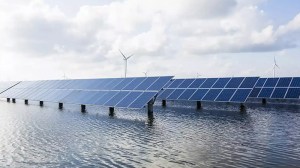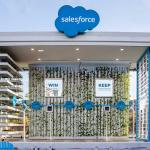Energy and utility companies make contingency plans. They prepare for everything from natural disasters to terrorist attacks. But what happens when catastrophes converge, like when 2020’s pandemic met severe hurricanes and wildfires?
Digitized energy and utility companies outshine those that have yet to embrace technology to integrate their legacy systems. Older technology systems lack flexibility and can’t deliver the experiences customers expect. They want personalized interactions and efficient customer service like they get from Uber and Amazon. Customers need the ability to report outages and issues to a service agent and get support or have a field technician fix the problem remotely. In-person service calls should be scheduled only when the problem calls for it.
Especially in times of crisis, customer experience is still a key differentiator. Eighty percent of customers say the experience a company provides is as important as its products and services. Customers have said they want support on every channel, immediate responses, and the ability to see all activities, accounts, and personalized recommendations.
As more severe weather occurs as a result of climate change and other unforeseen challenges test our population, rapid digitalization is a must. With the right technology and partners, energy and utility companies can:
- Provide superior customer experiences at every touchpoint
- Streamline operations to deliver on changing customer needs
- Harness customer data to improve service interactions
Digitalization (upgrading technology) may seem daunting, but the following steps can start you down the right path.
1. Foster a collaborative mindset
Culture may be the biggest obstacle you face when upgrading technology through digitalization. Changing internal stakeholders’ mindsets is an essential first step. Everyone, from new hires to the C-suite must understand and internalize the company’s new focus on providing the best customer experience possible. Only then will they embrace the digital tools needed to achieve their own customer-centric goals.
Leaders must engage with those on the ground to help everyone see themselves in service of every customer. Barriers and silos can be a challenge but you can align all departments, from sales to field service, by having them put the customer at the center of every business decision.
“To aid the global energy transition to zero carbon and help our B2B and B2C customers better manage energy efficiency and achieve more value, ENGIE invested in digital technologies.”
Address every customer need and expectation, from sharing seasonal rate changes to energy efficiency promotions to outage maps and safety communications. This works whether you sell and deliver energy or act as the delivery system on behalf of a third-party. Think of customers as markets of one and use their feedback to improve your operations.
For example, in 2016, French energy company ENGIE made a commitment to a zero carbon future. They created a new strategic initiative by offering zero carbon transition as a service, and embraced the Salesforce platform for a client-centric approach that worked anywhere in the world.
“To aid the global energy transition to zero carbon and help our B2B and B2C customers better manage energy efficiency and achieve more value, ENGIE invested in digital technologies like Salesforce Energy and Utilities Cloud to go digital faster,” said Marc Lallemand, CIO ENGIE Belgium. “Within 9 months we completed the digital transformation project.”
As you digitize, make certain everyone in the organization is comfortable with moving and failing fast to break down their resistance to change.
2. Adopt a single source of truth
Next, consider the kaleidoscope of segments in the populations you serve. Each customer expects personalized engagements and tailored offerings. That makes a single view of the customer critical.
A customer relationship management (CRM) system designed for the energy and utilities industry creates a single source of truth. It pulls in information from different systems so every team member sees the same data. This can improve collaboration and allow teams to be more agile.
“To aid the global energy transition to zero carbon and help our B2B and B2C customers better manage energy efficiency and achieve more value, ENGIE invested in digital technologies.”
Uncover products and services that are relevant to your customer and when they might want or need them by using your CRM to centralize available customer information and previous customer interactions. A CRM also connects customer-facing apps with existing back-office and billing systems. Service teams can use a CRM to easily locate cases, find previous conversations, and add new information in real time, whether customers interact with a chatbot or on SMS (short message service).
You can also configure a feedback loop that merges with your CRM data to gain a holistic understanding of customers. This is the sort of experience that only 20% of utility companies currently offer.
Texas-based Vistra Corp, for example, is using Salesforce Energy and Utilities Cloud to roll out a cross-channel, 360-view of the customer so its call center agents will ensure excellent service with every interaction. “We are focused on transforming the customer experience across all channels,” said Kolt Starver, vice president retail technology at Vistra Corp.
3. Sharpen your competitive edge
With all customer data in one place, sales and service teams can create, bundle, and deliver personalized services and offers. Artificial intelligence (AI) can engage customers with the most relevant information. This may include how to work with the utility to preserve grid stability during extreme heat. Or, optimize a quote based on spot-market energy prices for an industrial customer’s multi-site operations. AI insights also help the sales team grow margin and revenue with process automation and recommended services as “next best offers.” You can cross-sell and upsell existing customers using data which delivers the speed and agility critical to success in competitive markets.
“We have been able to put the customer at the center of every business decision and we’ve maintained our market position in an increasingly competitive market.”
Time is of the essence in the Commercial & Industrial segment, AI-driven insights help providers move quickly to optimize offers. A drawn-out implementation isn’t necessary to see the benefits of a robust CRM: British multinational energy and service provider Centrica Business Solutions went live with Salesforce Energy & Utilities Cloud in three months. “We have been able to put the customer at the center of every business decision and we’ve maintained our market position in an increasingly competitive market,” said Rory Briggs, product owner and commercial manager, Centrica Business Solutions.
The technology allowed Centrica to deliver a personalized commercial and industrial (C&I) quote-to-contract process and accelerate new customer offerings. Quick action, agility, and accuracy help them stay ahead of their competitors.
Adapt for the future
Energy and utility companies must digitize to meet current customer expectations to propel the business forward. Digital solutions let companies adapt to challenges fast, no matter the industry. And, as the world emerges from the current pandemic, well-prepared companies will lead the economic recovery with clean energy and storage projects. With stakeholder buy-in, the right technology, and the right partners, digital transformation can happen in a matter of months. Learn more about how digitalization can transform utility customer engagement and how to get started with on-demand sessions and content at Industries Summit.


















